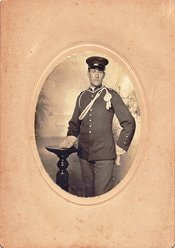 We know about the World War II battles at Pearl Harbor, Hawaii and Corregidor in the Philippines, but what were those islands like prior to that era? When did the U.S. acquire them, and how did they become military fortifications? The Philippines The first stop for Yours in a Hurry character, new army private Purl, is Manila, the capital of the island of Luzon in the Philippines. To reach the naval station, Cavite, about two miles from the city, he sails through narrow Manila Bay past Corregidor Island. The Regular Army was establishing a post in 1908 and by early 1909 the Army Corps of Engineers had started constructing concrete emplacements, bomb-proof shelters, and trails at various parts of the island. The Philippines consist of nearly two thousand islands, some only rock and reef. Others, like Mindanao and Luzon had large populations. In 1909 its diverse population included 'Mohammedans', Chinese and Spanish settlers. The navy and army had two missions in addition to protecting the islands: assisting in upgrading the battlements on Corregidor to better protect Manila Bay, and completing a topography study of uncharted areas on the islands. Conditions in the tropics were unlike anywhere the Americans had experienced. Hostilities persisted after the United States took responsibility of the islands, including battles with the Spanish during the Spanish American War in 1898 and the Balangiga Massacre in 1901, a major U.S. loss. Although the U.S. wasn't at war, they knew that the native insurgos could decide to make trouble at any time. Pearl Harbor When Purl and his friend Robbie arrive in Hawaii, they find the climate much better than in the jungle atmosphere of the Philippines. The former Sandwich Islands were protected by the United States starting in the 1880s, and were annexed in 1898. Little attention was given Hawaii until the Spanish-American war, and then only to Honolulu harbor. The U.S. government first obtained exclusive use of the Pearl Harbor inlet and the right to maintain a repair and coaling station for ships here in 1887. After the overthrow of the Hawaiian Kingdom, the United States Navy established a base on the island in 1899. In 1908 Congress approved an estimated three million dollar expansion in the Pacific, including the Pearl naval station, which was to be the largest naval base in the world. Purl's unit assists with the work in deepening the harbor channels for newer, larger ships. Next time: Auto and Air Races at Indianapolis
0 Comments
Leave a Reply. |
Archives
August 2020
Categories
All
|
 RSS Feed
RSS Feed